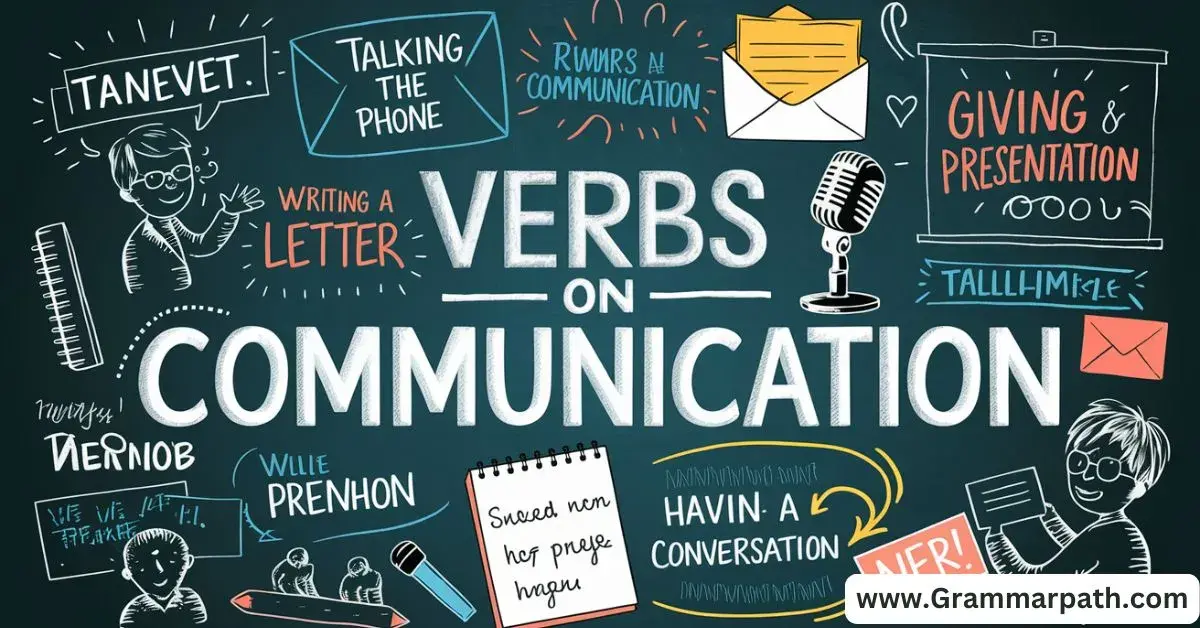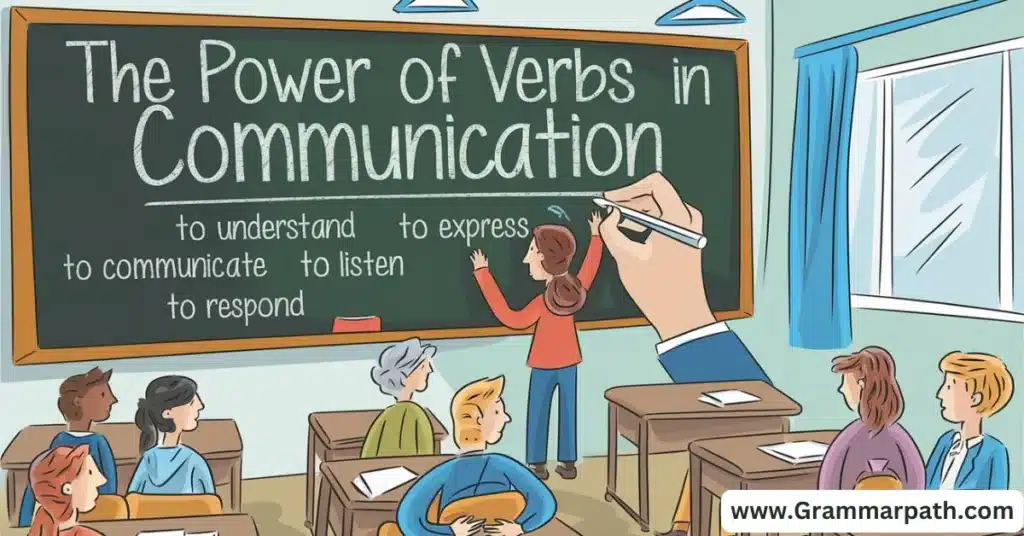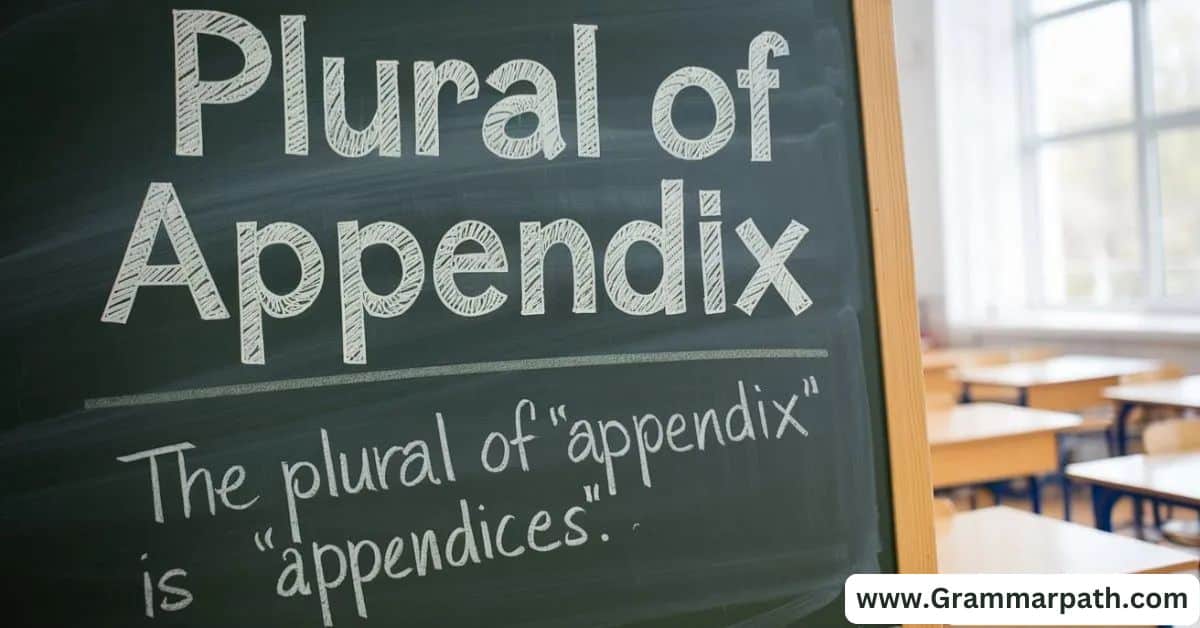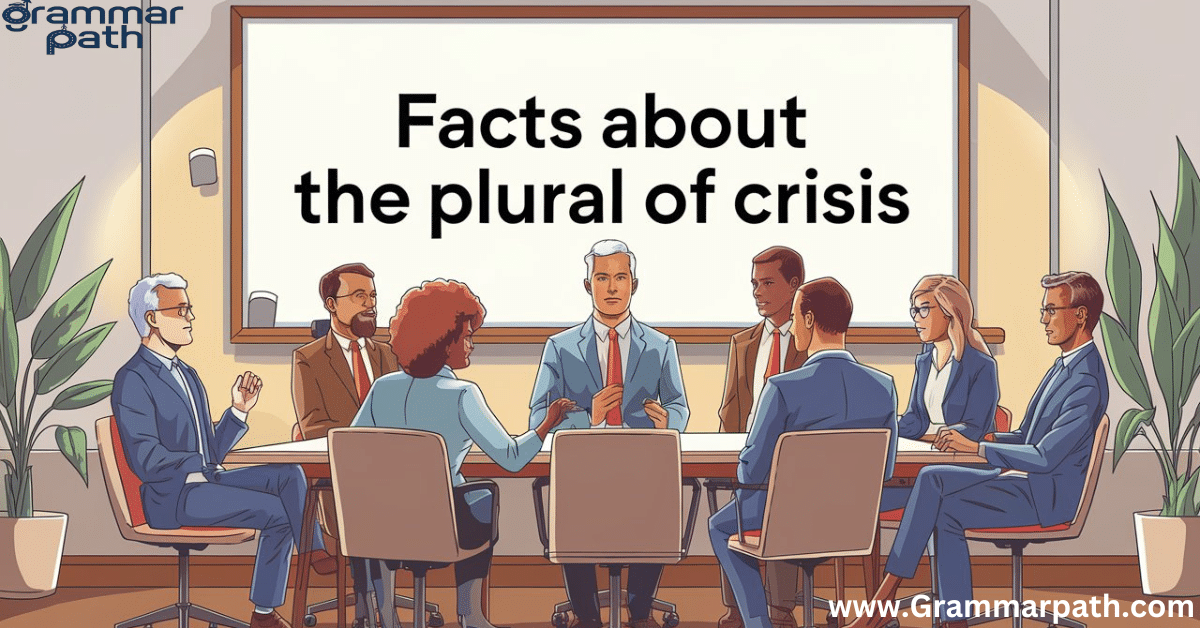
The Impact of Verbs on Communication
Verbs are at the heart of how we communicate, serving as the driving force in sentences and shaping our messages. Think of verbs as the engine of language; they propel our ideas forward, clarify our thoughts, and add depth to our expressions. Verbs in communication aren’t just grammatical necessities; they’re powerful tools that impact clarity, tone, and engagement. From conveying actions and mental processes to states of being, verbs are the unsung heroes of everyday language.
One of the most fascinating aspects of verbs is their versatility. Verbs aren’t limited to physical actions like “run” or “jump.” They cover a vast array of meanings and contexts, such as mental verbs (like “think” or “imagine”) and linking verbs (such as “is” or “seems”) that connect ideas. This range makes verbs an essential component in both spoken and written communication. For anyone looking to sharpen their communication skills, understanding how verbs operate can open up new possibilities for clearer, more compelling interactions.
In this article, we’ll dive into the different types of verbs, their unique functions, and how they enhance our communication. Along the way, we’ll provide scenario examples to illustrate how each type of verb can shape messages differently.
Whether you’re writing a formal email, crafting a narrative, or explaining a concept, verbs help shape your audience’s understanding and reaction. With verbs as your storytelling tools, you can elevate your language to be more vivid, persuasive, and memorable.
But Verbs Aren’t Just About Physical Actions!
When most people think about verbs, they imagine words that describe physical actions, like “run,” “eat,” or “write.” However, verbs go far beyond these. We encounter mental verbs daily, which express internal thoughts or feelings. Words like “believe,” “consider,” and “understand” don’t describe physical actions but mental actions that shape how we communicate thoughts. These mental verbs are crucial in situations where we need to express empathy, consideration, or even complex reasoning.
Consider an email from a team leader, Alex, to a colleague:
“Hi Taylor, I’ve been thinking about the project’s direction, and I believe there might be a more efficient approach.”
Here, mental verbs like “thinking” and “believe” convey Alex’s thoughts, signaling reflection and openness to dialogue. These verbs encourage a collaborative tone, showing that Alex’s ideas are not fixed but open to Taylor’s feedback.
Similarly, states of being or “being verbs” like “is” or “are” play a unique role in communication by defining situations and relationships. A simple sentence like “The meeting is essential for our project” conveys the importance of the meeting without requiring action. State-of-being verbs can subtly reinforce stability, status, or importance, offering clear direction without urgency.
Here are Some Examples of Verbs in Action
Each type of verb has its unique function in communication verbs. Below are key categories and examples of their real-life applications:
| Verb Type | Definition | Examples in Sentences |
|---|---|---|
| Action Verbs | Verbs that describe a physical or visible action | “Sam runs daily for exercise.” “She builds websites for small businesses.” |
| Mental Verbs | Verbs that indicate mental processes or feelings | “I consider him a friend.” “She believes in teamwork.” |
| State-of-Being Verbs | Verbs that indicate existence or state | “He is a teacher.” “They are excited about the trip.” |
| Linking Verbs | Verbs that connect a subject to more information | “The team seems motivated.” “The room smells fresh.” |
| Helping Verbs | Verbs used with other verbs to form different tenses | “She has finished the task.” “They will be presenting tomorrow.” |
| Dynamic Verbs | Verbs that show change or action over time | “The economy grows gradually.” “She is learning French.” |
| Auxiliary Verbs | Verbs that modify other verbs to create different tenses | “I have completed my work.” “She can solve this problem.” |
Each type has unique applications in professional, informal, and creative contexts. Let’s explore these categories in greater depth and understand how they influence grammar and communication.
And Guess What? Verbs are Like Chameleons Too!

Verbs are as adaptable as chameleons. They take on various forms depending on their role in a sentence, the intended tone, and even the verb tenses required for clarity. This versatility helps writers and speakers adjust their messages to fit specific scenarios, audiences, and goals.
For example, helping verbs like “will” or “can” work with main verbs to indicate future actions or possibilities. In an email regarding project timelines, phrases like “We will complete this by Friday” or “You can review it by Tuesday” create clear, time-bound expectations. Helping verbs enhance statements by defining possibility, time, or necessity without overwhelming the reader with complex grammar.
Verbs also change forms to fit different verb tenses and moods, adapting based on whether the action is ongoing, completed, or hypothetical. For instance, “She had been practicing piano for years” uses the past perfect continuous tense to show ongoing action in the past. By mastering verb forms and tense verbs, communicators can enhance storytelling and create vivid pictures of events across timelines.
Pro Tips
- Most Important Paragraph: The paragraph exploring how verbs can be adapted like chameleons is a key takeaway. It captures the flexibility of verbs and explains how they serve multiple purposes based on tense, mood, and intent. Remember to experiment with verb forms and helping verbs to craft more impactful sentences in your writing.
Quick Overview: The Power of Verbs in Communication

- Express Action and Thought: Verbs cover physical and mental actions, making them versatile in different contexts.
- Build Connections and Define States: Linking verbs and state-of-being verbs provide structure and context to sentences.
- Create Emotional Impact: Choosing the right verb can shift a sentence’s tone and enhance reader engagement.
Mastering verbs can transform your communication skills, adding layers of nuance and clarity. When applied thoughtfully, they help convey complex ideas and evoke emotion, making your writing memorable.
Final Thoughts
As you can see, verbs are far more than just action words. They are crucial tools in any language user’s toolkit, impacting everything from sentence structure to narrative flow. By exploring and practicing different verb forms, writers and speakers can create more engaging and precise messages. Whether it’s an informal chat or a business proposal, choosing the right verb makes a message clearer and more persuasive.
In closing, verbs are transformative elements in language, blending emotion, action, and existence. This ability to switch seamlessly between roles makes them unique and invaluable in achieving effective communication. As you grow in understanding the power of verbs, you’ll notice improved clarity and depth in your language skills.

Emily Olivia is an experienced writer specializing in grammar and English language topics. With a passion for clarity and precision, she shares valuable insights on synonyms, grammar rules, and writing tips to help readers enhance their language skills on Grammar Path.





